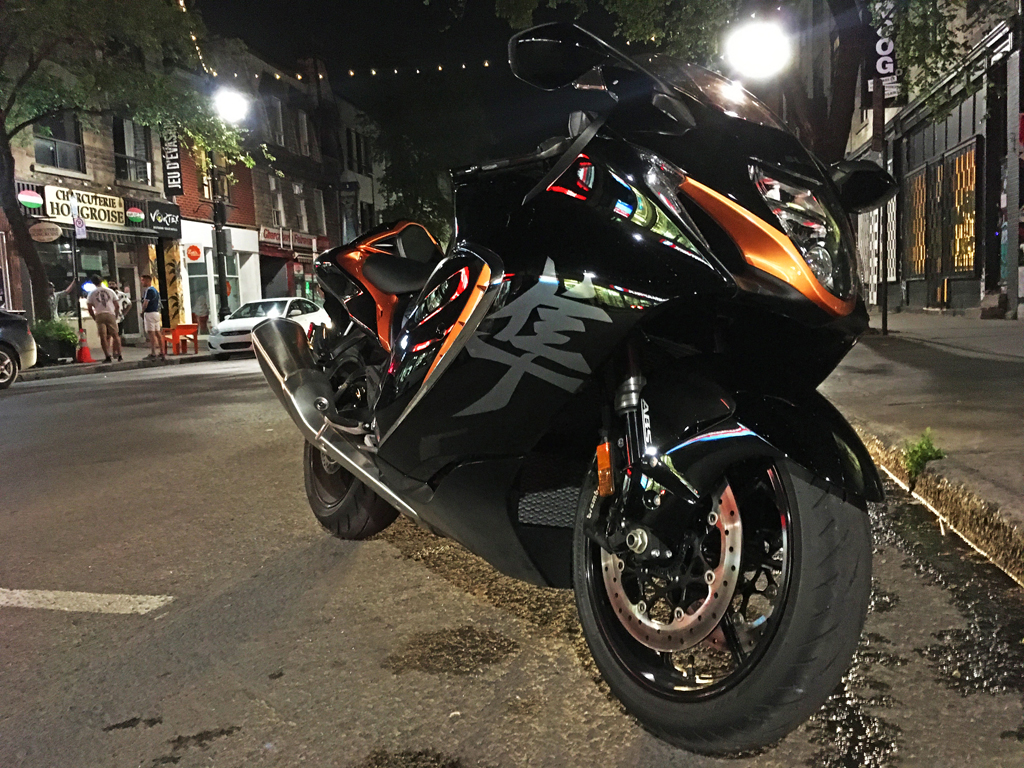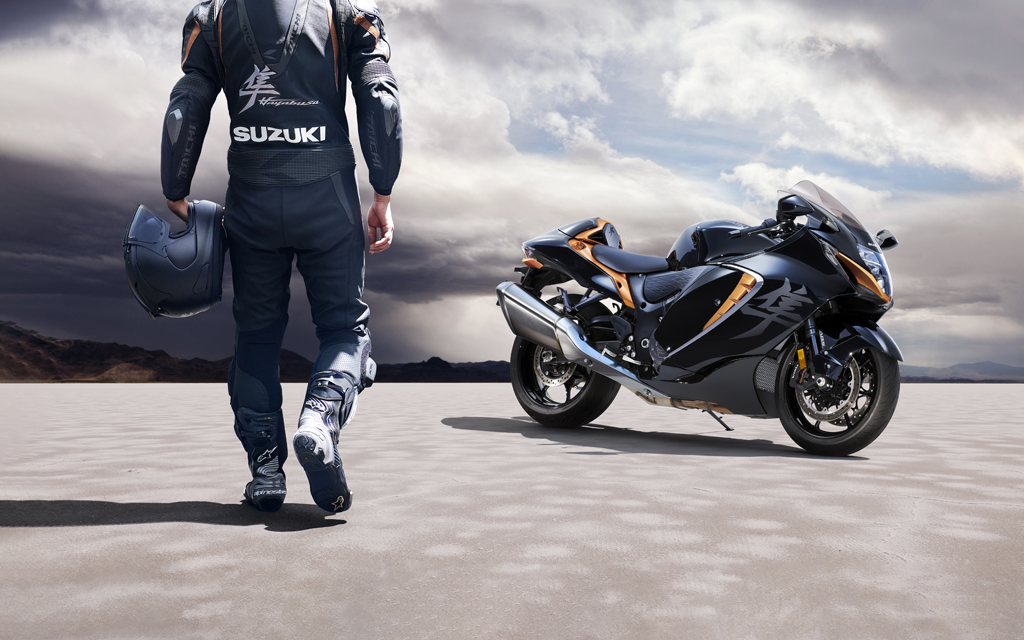*This article was published in Vol. 51 No. 7 of Cycle Canada digital magazine.
ITS OWN KIND OF FAST
Third gen Busa defines raw acceleration
The introduction of a new Hayabusa is a rare event. During the couple of decades that followed the original 1999 model’s launch, Suzuki has only presented one update, the 2008 2nd gen. Putting an end to years of rumours, the Hamamatsu manufacturer now finally unveils a third generation of its legendary beast, the 2022 GSX1300R Hayabusa.
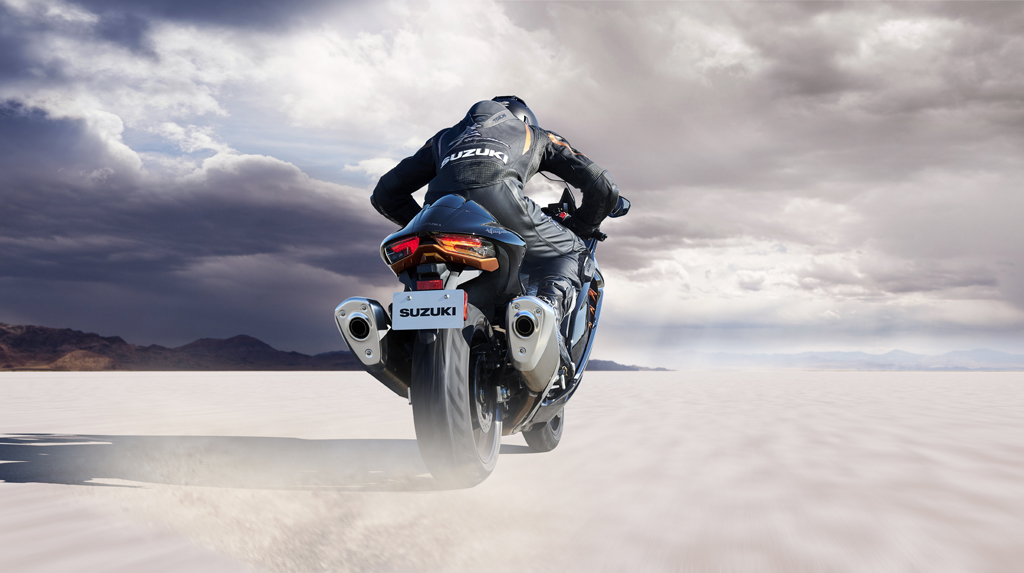
Over the years, the combination of very little Hayabusa news, of the captivating top speed wars’ disappearance, and of the introduction of ultralight 200 hp superbikes seems to have eroded motorcyclists’ memories of what exactly is special about bikes like the big Busa. The model’s presence on the market in 2021 could even legitimately be questioned. Could it be that motorcyclists turned a page? Are we now so far removed from the fascinating era of the race to 300 km/h that a machine solely dedicated to this mission essentially loses its interest?
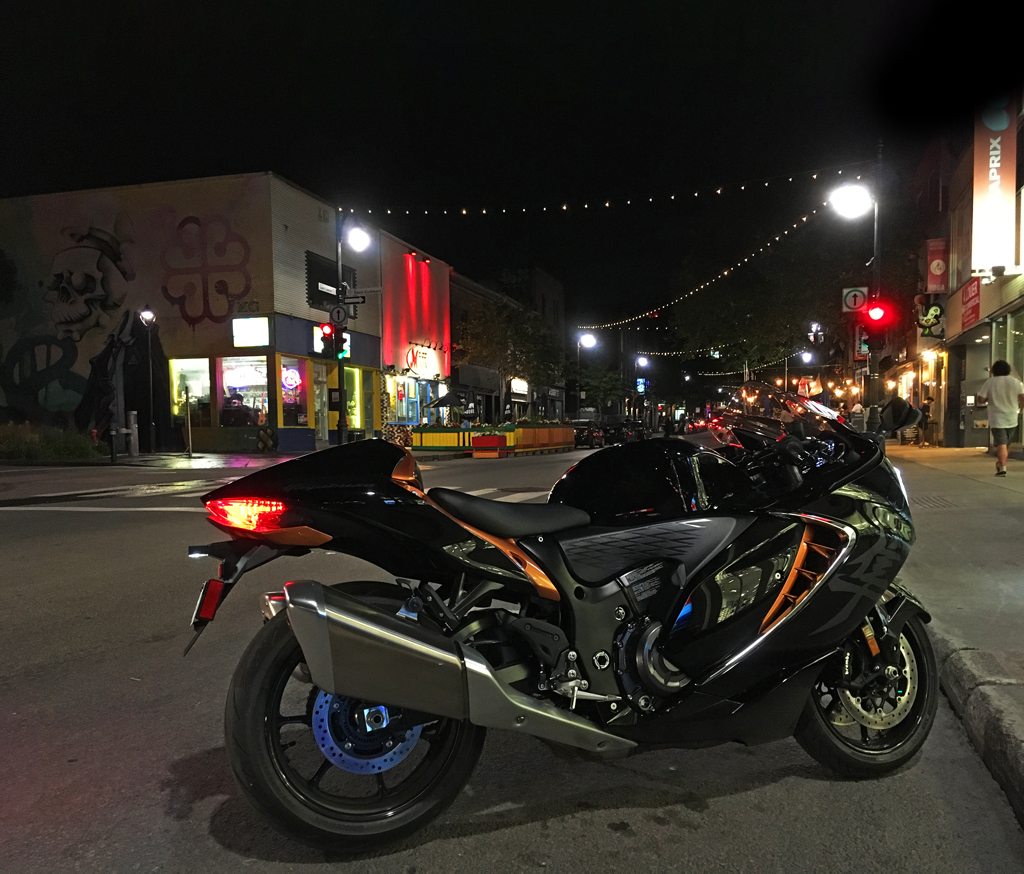
Maybe, but if this was the case, then the automotive world would seem to have an infallible remedy: extremely extreme performance. All Suzuki would need is an insane 400 km/h capable 300 hp turbo Busa and in an instant the new monster would be on everyone’s lips the planet over. The formula is presently used with great results in the world of cars where 1,000 hp will probably be a regular thing soon.
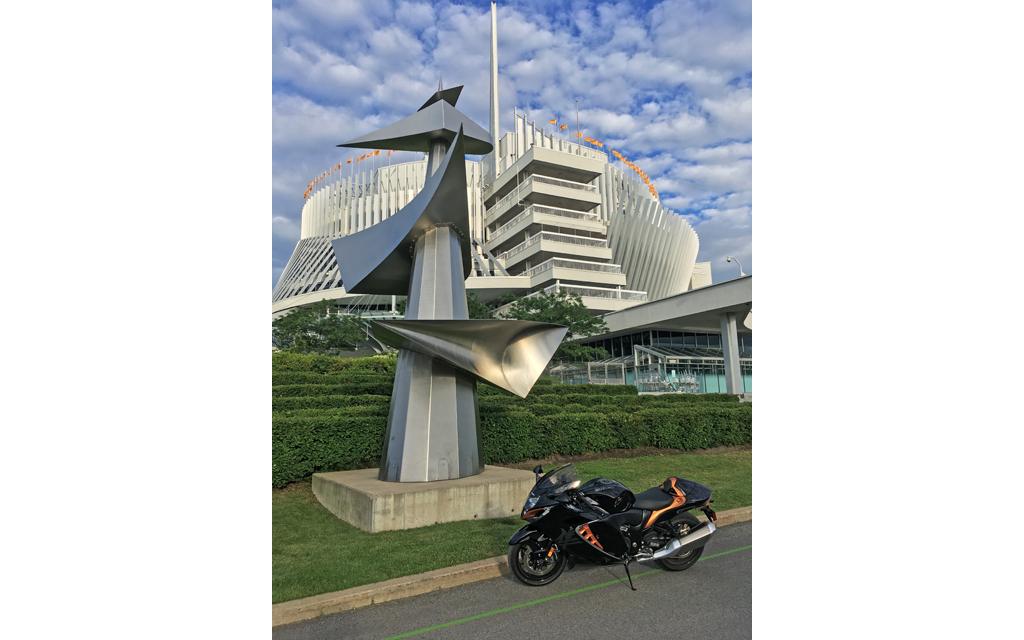
But Suzuki did not choose to go the extreme way with the 2022 Hayabusa. Quite the contrary, actually, as the model loses half a dozen of its previous 197 horsepower and, at the end of the day, is essentially a smart and serious revision of the 2008 version. Probably expecting exciting crazy numbers, more than a few Busa fans expressed disappointment with a status quo in performance. In a way, but not at all for that reason, my first contact with the 2022 Busa somewhat reflected this lowish level of excitement. Here’s why.
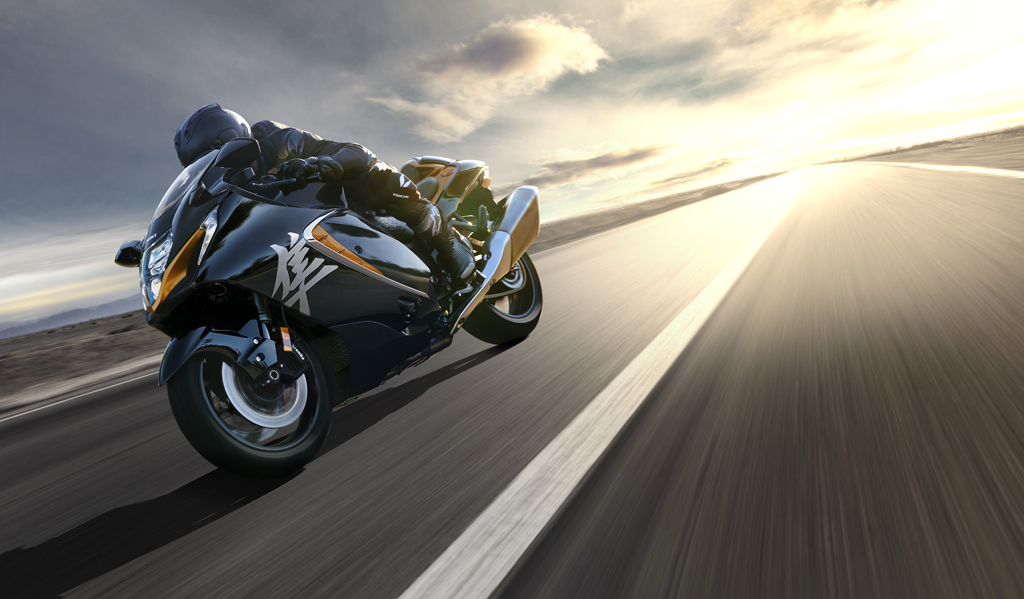
I was one of the lucky journalists who attended the original 1999 Hayabusa global press launch. It was held in Spain and remains to this day one of the most memorable press events I’ve taken part in. I remember Suzuki’s press relation person’s words: “This new model is indeed named after a falcon capable of 300 km/h, but we kindly ask that you respect legal limits on the highway portion of our itinerary.”
Sure thing, Sir, not a problem.
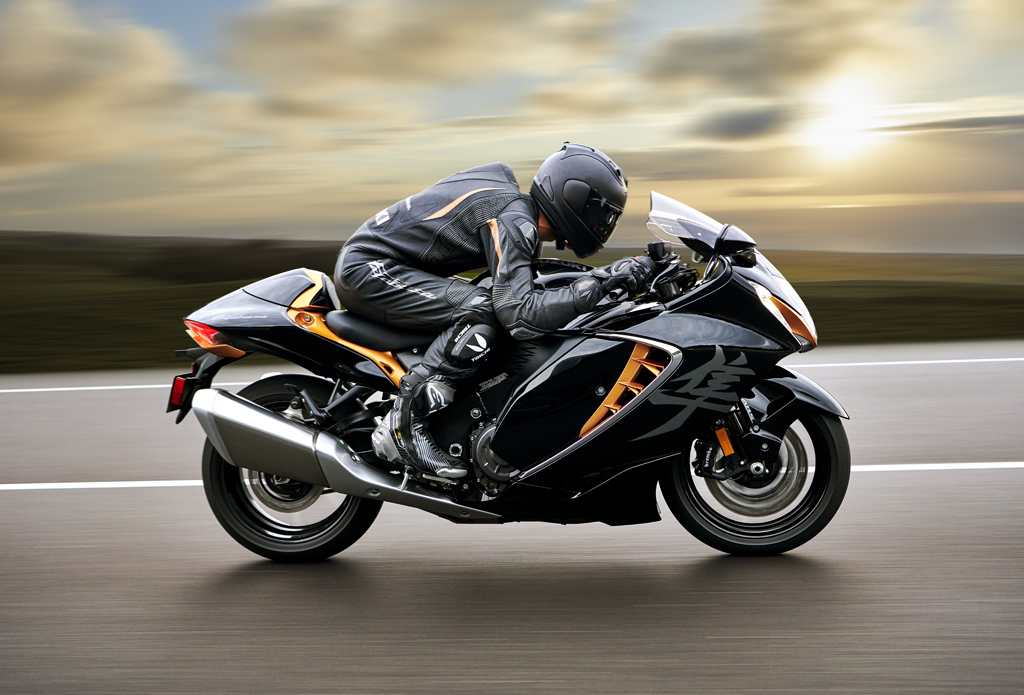
Once we got to the highway, it was as if a green flag dropped. Moto journalists from around the world who had travelled here to confirm if this funky-looking bike was indeed the new king of speed, did the exact opposite and all twisted that right grip without mercy. Never in my life have I ridden so fast for so long, let alone on the street. A ride that should’ve lasted 45 min took 15 min with the speedometer needle only falling below 300 km/h when the highway wasn’t perfectly straight. Fortunately, folks in Spain are generally racing fans and cooperated beautifully by moving out of our way and waving as our crazy Busa convoy flew by at a quarter of the speed of sound. It was an experience I’ll never forget.
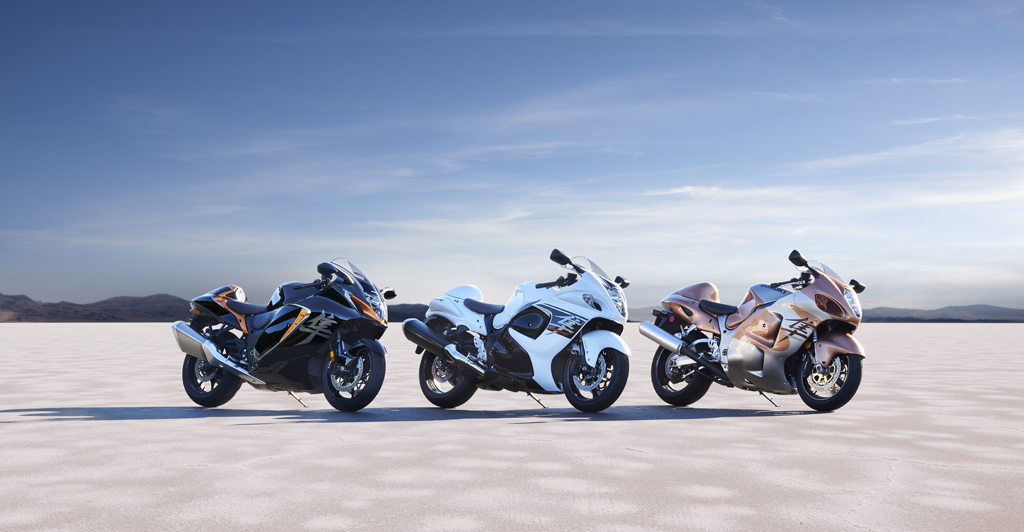
What the press launch of the 2008 2nd gen Hayabusa gave up in terms of exotic location—it was held at the Road America track in Wisconsin—it made up for in speed. The long and super fast layout allowed for 300 km/h to appear on the instruments (so, slightly less in reality) three times per lap. To muscle the long and heavy Suzuki lap after lap proved so physically demanding, I can’t recall any other time I spent on a track, including races, being more drained of strength and energy. After a few intense 20 min morning sessions during which getting passed by the American journos chasing me was out of the question, my hands and forearms began to severely cramp up, which resulted in an unexpected yet serious problem at lunch when I just couldn’t squeeze the ketchup bottle.
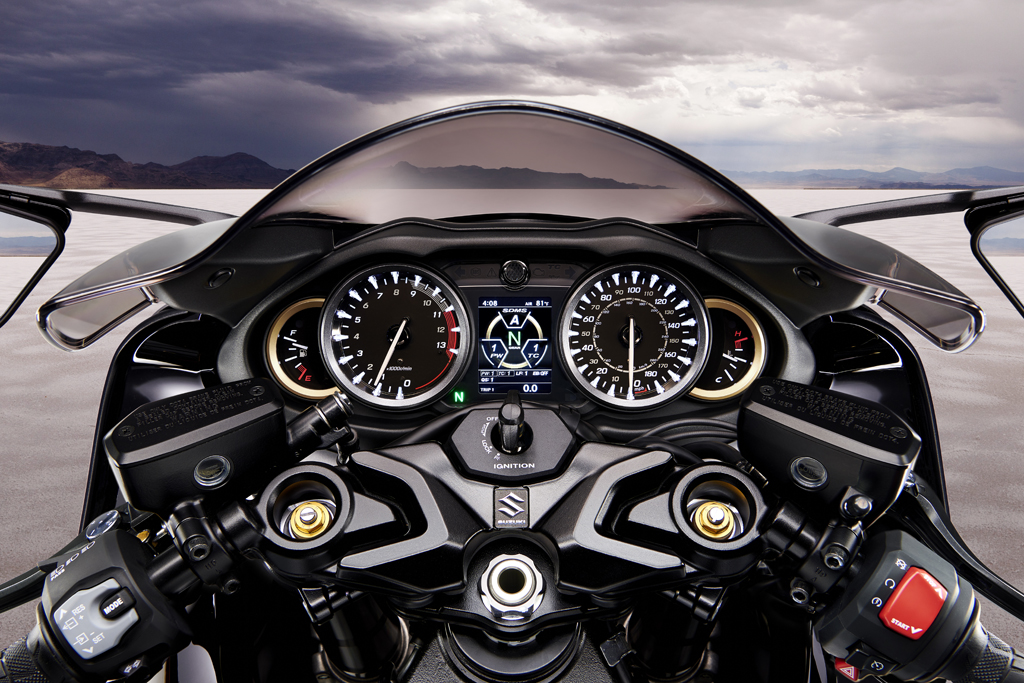
Which brings us to the 3rd gen Busa test and my somewhat disappointing first contact. The thing is, I picked up the bike in colleague Éric Ménard’s driveway. Then I rode it back home. So, yeah. Interestingly, however, the test unit in question was a production model rather than a preproduction bike carefully prepped for press events. It confirmed something I’ve often noticed, at least with Japanese brands, which is that production motorcycles do seem to feel more refined than the pre-prod units we ride on many press launches. Also, this being a local test, I’d have the opportunity to do it on my terms rather the manufacturer’s, which is stating the obvious, yet does mean riding it in on familiar roads and in any circumstance I wish.
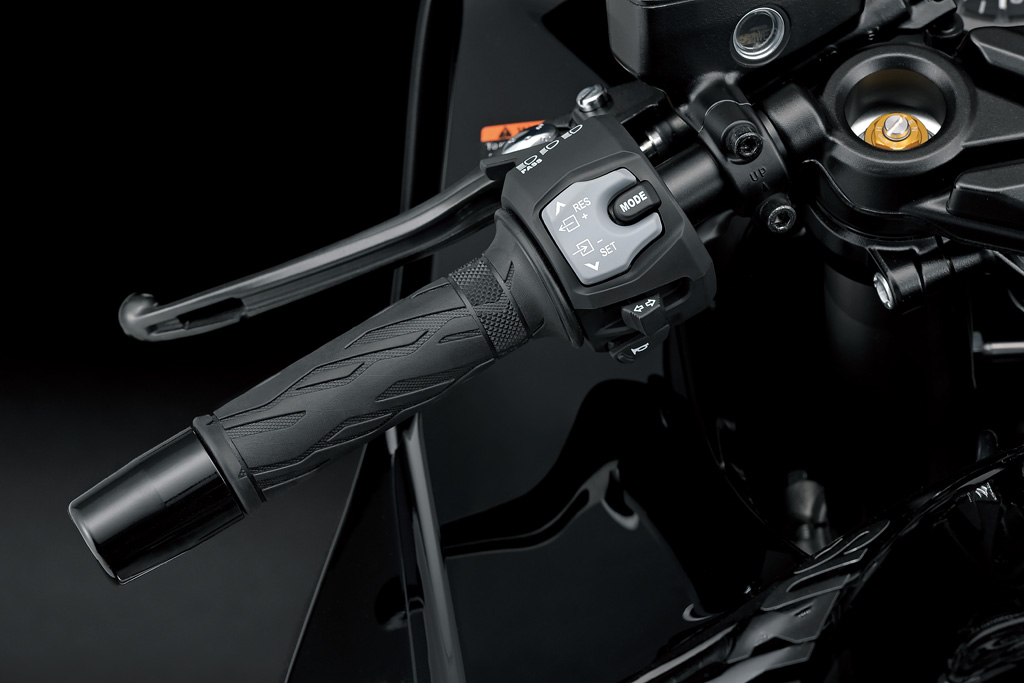
With the exception of its big twin spar aluminum frame, which was mostly left untouched, Suzuki revised almost every part of the Hayabusa for this 3rd gen. The upgrades make the 2022 Busa easier to ride thanks to a slew of electronic rider aids, improve engine smoothness and longevity and bring dramatic changes to the styling. Those who’ll pay the $22,399 (an important hike from 2020’s $15,699) to acquire the new model will get a considerably updated Hayabusa, but not an all-new one.
Ties to both previous generations are obvious the moment the rider reaches way out to grab the 3rd gen’s low clip-ons. This type of riding position that literally lays the rider over the fuel tank has at one point been common on sports bikes, but it was decades ago and taking a seat on the Hayabusa somewhat brings you back there. Today, the norm in that class is a much more compact posture dictated by a substantially reduced seat to grips distance.
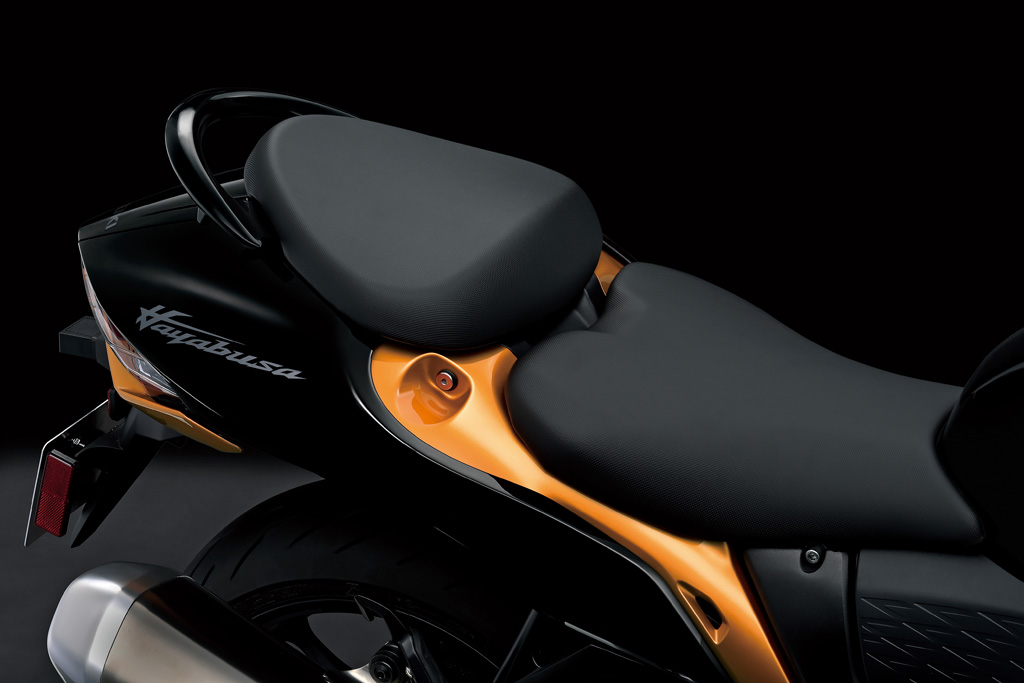
Because of this, the Busa’s riding position isn’t comfortable unless the speed is high enough that the wind pressure on the rider’s torso relieves all the weight put on the hands. One of the 2022’s new features could actually be helpful here—more so for those living near an autobahn—as the standard cruise control can be engaged up to 200 km/h.
It really is too bad Suzuki didn’t use this opportunity to reduce or even eliminate the extreme nature of the riding position, since the Hayabusa does surprisingly well everywhere else in terms of comfort. For instance, the seat is pleasantly wide and plush for a sports bike, while the updated and still fully adjustable suspensions offer remarkable absorption capability as they all but isolate the rider from jolts on bad pavement. Considering this test was mostly conducted around Montreal where we take pride in our bad pavement, that the Busa behaved so well on these streets is about as great a compliment as it gets suspension-wise. Actually, other than for its severe ergonomics, the Hayabusa does so well in everyday use I began to wonder why Suzuki wouldn’t offer a long distance-capable Busa GT: same cool and classy styling, same power and awesome torque, same unshakable chassis and same tech, but with a pair of well-integrated side cases along with handlebars that have been pulled back and raised enough to straighten the rider’s torso. That’s all. Oh well, one can dream.
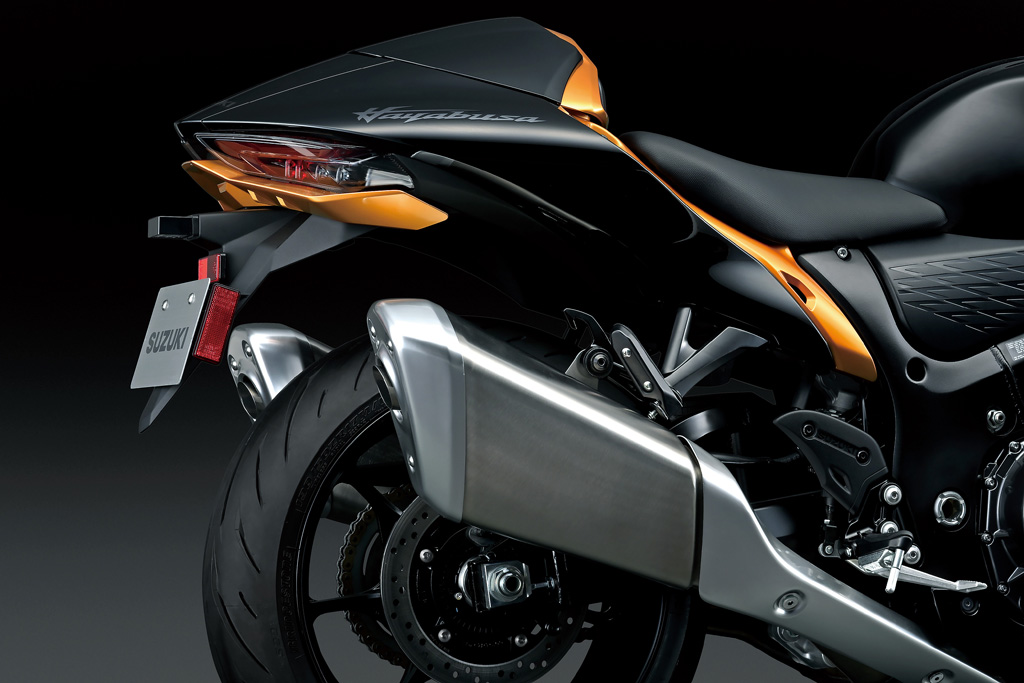
So, not only did the 2022 Busa’s power not get bumped, but it actually went down about 6 hp. Disappointing? Yes, always. You never want less on these bikes. That being said, there’s still about 190 hp to play with, which sure is nothing to sneeze at. According to Suzuki, there are several reasons behind this slight drop in maximum power. The first is that it allowed torque to be optimized at low and mid revs, where the vast majority of everyday use happens. The manufacturer also says a lot of work went into improving engine vibration and durability. And finally, the Busa needed to meet the strict Euro 5 emissions standard, which it now does. To reach all those goals, almost every internal part of the big inline-4, along with its intake and exhaust systems, had to be improved.
Predictably, even though the manufacturer explains its reasoning and confirms to potential buyers that the Busa’s famous 299 km/h limited top speed remains intact on the 2022 model, there’s a lot of debate about the choices Suzuki made here. The thing is, though, these debates all but end the instant the whining/typing stops and reality happens, meaning when the big Suzuki’s electronic throttle is fully opened through the 6 gears of its buttery transmission.
Oh. My. God.
Even if you’re familiar, as I am, with the kind of performance the latest 200 hp plus superbikes deliver, the Hayabusa’s acceleration astonishes, mystifies, stupefies. Nothing on the market—except its rival over at Kawasaki—as the ability to catapult itself forward, from a dead stop, with such intensity. And with so little skill required too, as the exercise can be accomplished with only average competence thanks to the perfect control guaranteed by all the electronic aids.
Suzuki took its sweet time to step into the electronic rider aids era, but the 2022 Hayabusa is equipped with just about all of them. The list includes traction control, combined ABS, power modes (including one that reduces power a lot, by probably some 60 hp—Suzuki doesn’t share the exact number), engine-braking control, a quick shifter and rear-wheel lift prevention during hard braking. The 3rd gen Busa also innovates with a function that lets the rider set a maximum speed to prevent expensive unintended excesses. However, one of these aids, although it isn’t new at all, is quite special because of what it brings to this particular experience: wheelie control.
At the core of all these aids, by the way, is a 6-axis IMU (Inertial Measurement Unit), the most advanced technology today on street-legal bikes in terms of data acquisition required to make various electronic assistance systems work properly. And when it comes to the 2022 Hayabusa’s wheelie control function, the benefits of the IMU are amazing.
Superbikes owners know full well how hard controlling front wheel lift is during maximum acceleration from a stop, in first and even second gear. Because it’s much longer, heavier and lower than, say, a GSX-R1000, the Hayabusa doesn’t immediately want to stand up on its rear wheel and has a natural advantage during those accelerations. The new wheelie control elevates that advantage remarkably by letting the front tire leave the ground by few centimeters only, right after the clutch is released (that is, if it’s set that way; it can also be set to prevent any lift, or be deactivated entirely). During the rest of the full-throttle acceleration in first and second gear, the system maintains the front tire at this distance from the ground with absolute precision and without the intervention ever being felt by the rider. The result is the ability to use the entire power of the Hayabusa with incredible ease. Drag racing experts always say the perfect quarter mile is the one where the front tire slightly lifts off right after the start and stays just above the ground as long as possible; and that’s exactly what happens during full-throttle accelerations on the new Hayabusa, no matter the rider skills. Even with the best their launch controls can do, and even with a talented rider at the controls, physics still apply to light, short and high superbikes, which simply can’t duplicate the Busa’s combination of ease of operation and speed.
In the end, while the 2022 Hayabusa is neither more powerful nor faster than the 2008–2020 version, its new rider aids do allow mere humans to experience its fantastic acceleration capability. And make no mistake: those accelerations do deserve to be called furious even in today’s market. Bikes really similar to the Hayabusa are so uncommon and so rarely redesigned that after a few years of testing light, track-focussed, big horsepower superbikes, it becomes easy to forget how ferociously fast the big Suzuki is. We end up getting used to the way superbikes accelerate: in quite a complex way in first and second gear, and then very hard after. But to get back in the seat of a Hayabusa puts things in perspective and reminds very clearly why it earned its legend status. It is true that on a racetrack, the big Suzuki no more than gets by. But when the argument isn’t about lap times and becomes about 0–300 km/h sprints, the Busa falls into its natural habitat and provides the rider with an absolutely phenomenal experience.
